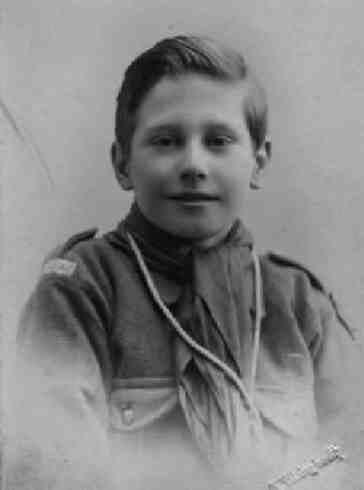
Figure 1.--HBC estimates that this English Scout was photographed about 1915, unfortunately the photograph was not dated. |

|
The first Scout uniform adopted by the new British Scout association appeared in 1906. The uniform adopted for the Cubs, especially the cap also became a standard. The English Scout association has made severalmajor changes in the uniform. We have only limited chronolgical information on English Scouting. While we have a variety of historical images, often they are not dated. We have begun to collect some dated images which will show us how the English Scout uniform evolved over time. Perhaps the most significant was the new uniform adopted in 1969 including long pants for the Scouts. There have, however, been many other changes made over time in British Scout uniforms, some major, others only minor.
The inspiration for the original Boy Scout uniform was the British Army uniform, especially the field uniform worn by Lord Baden Powell and his men during Boer War in South Africa.
The English Scout uniform was of course very important as many countries used it as a basis for the scout uniform in their countries when the movement owas founded. These early uniforms or at least certain elements of them endured for decades as the basic Scout uniform worn around the world.
The first Scout uniform appeared in 1906. The uniform was constantly changed over the subsequent decades. In some decades the uniform remained essentially unchanged in some decades with only minor changes. In other decades the changes were quite substantial. One problem in compiling each section on a decade is complicated by the fact that many available images are undated, thus making it difficult assess the inforamtion.
The English Scout uniform in the 1910s consisted of a Smokey Bear hat, light colored shirt, dark short pants, and kneesocks. Many boys wore laynards, but I'm not sure what they signified. The Wolf Cub organization was formed during World War I in 1916. It was decided that the younger boys should have an entirely different uniform.
A series of postcards from 1922 provide us some interesting insights on English Scouting in the years immediately following World War II. The Smokey Bear hat continued to be the single most destinctive elelment of the English Scout uniform and it was adopted by Scouts all over the world. The images also provide a look a the Scout salute, the wlaking stick (pervsive in early Scouting), and a little poetry added by the card publishers.
We note letters from the Briish Scout magazine, The Scouter during the 1930s discussing the Scout uniform. We also have a Scout Shop advertisement showing uniform items available for Scouting in the 1930s.
The 1940s were dominated by World War II. World War II broke out (September 1939). The Boy Scouts as in World War I mobilized to support the war effort. We think thst they were involved in a range of home front activities. This time after the fall of France, the Home Front becme the front line with the Bttle of Britain. We have been unable to find much information on the various activities the Scouts engaged in during the War. Hopefully HBU readers will have some information on this. The Scout programs were impaired by both the call ups for military service which look many experienced Scouters and youth lreaders out of the program. The ecacuations from the cities also disrupted many Scout troops. Presumably the boys joined troops in the areas to which they were evacuated. This is also something we have been unable to find information about. The War ended with the NAZI surrender (May 1945) and the Japanese surrender (August 1945). We are not sure how this affected the Scout movement, but one impact was that many de-mobilized Scouters and former Scouts could now contribute to the movement. Britain was severely weakened by the War and war-time austerity continued after the War.
The Englisgh Scout uniform was the khaki short pants uniform with kneesocks and a beret. We note letters from the Briish Scout magazine, The Scouter during the 1950s discussing the Scout uniform.
The English Scouts adopted an entirely redesigned uniform in 1969. the Scout and Scouter Uniforms were changes, out went the lemon squeezer hats and the shorts, and in came green berets, mushroom trousers, and green shirts for the Scouts, and fawn shirts for the Venture Scouts and Leaders.The Cub uniform was unchanged.
British Scouts in the late 80s carried out a Uniform review, which saw the sad death knells for the Cub cap and Scout beret. Both items which although they have been gone for several years, they still seem to crop up as symbols for the movement. Packs and Troops were also given the option to decide on a uniform, but they were asked to remember the image of the movement. Carolyn Soto published a photographic study, The Boy Scouts depicting Scounting in Canada, the United Kingdom, and the United States during the 1980s.
Navigate the Historic Boys' Uniform Chronology Pages:
[Return to the Main chronologies page]
[The 1900s]
[The 1910s]
[The 1920s]
[The 1930s]
[The 1940s]
[The 1950s]
[The 1960s]
[The 1970s]
[The 1980s]
[The 1990s]
[The 2000s]
Navigate the Historic Boys' Uniform Web Site:
[Activities]
[Biographies]
[Chronologies]
[Countries]
[Essays]
[Garments]
[Organizations]
[Religion]
[Other]
[Introduction]
[Bibliographies]
[Contributions]
[FAQs]
[Questions]
[Unknown images]
[Boys' Uniform Home]
Navigate the Historic Boys' Uniform Web organizatiion pages:
[Return to the Main English Scout uniform page]
[Return to the National Scout page]
[Boys' Brigade]
[Camp Fire]
[Hitler Youth]
[National]
[Pioneers]
[Royal Rangers]
[Scout]
